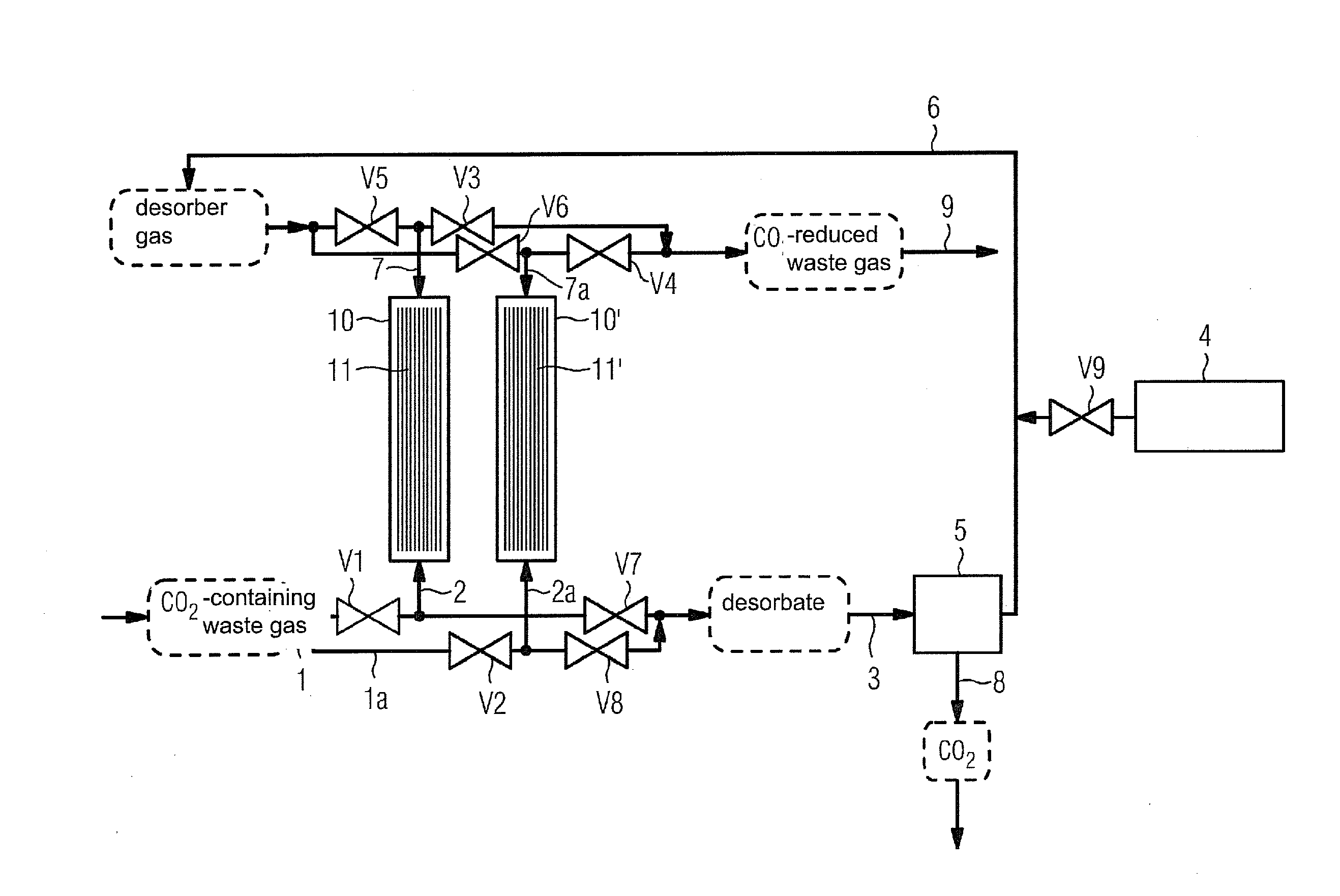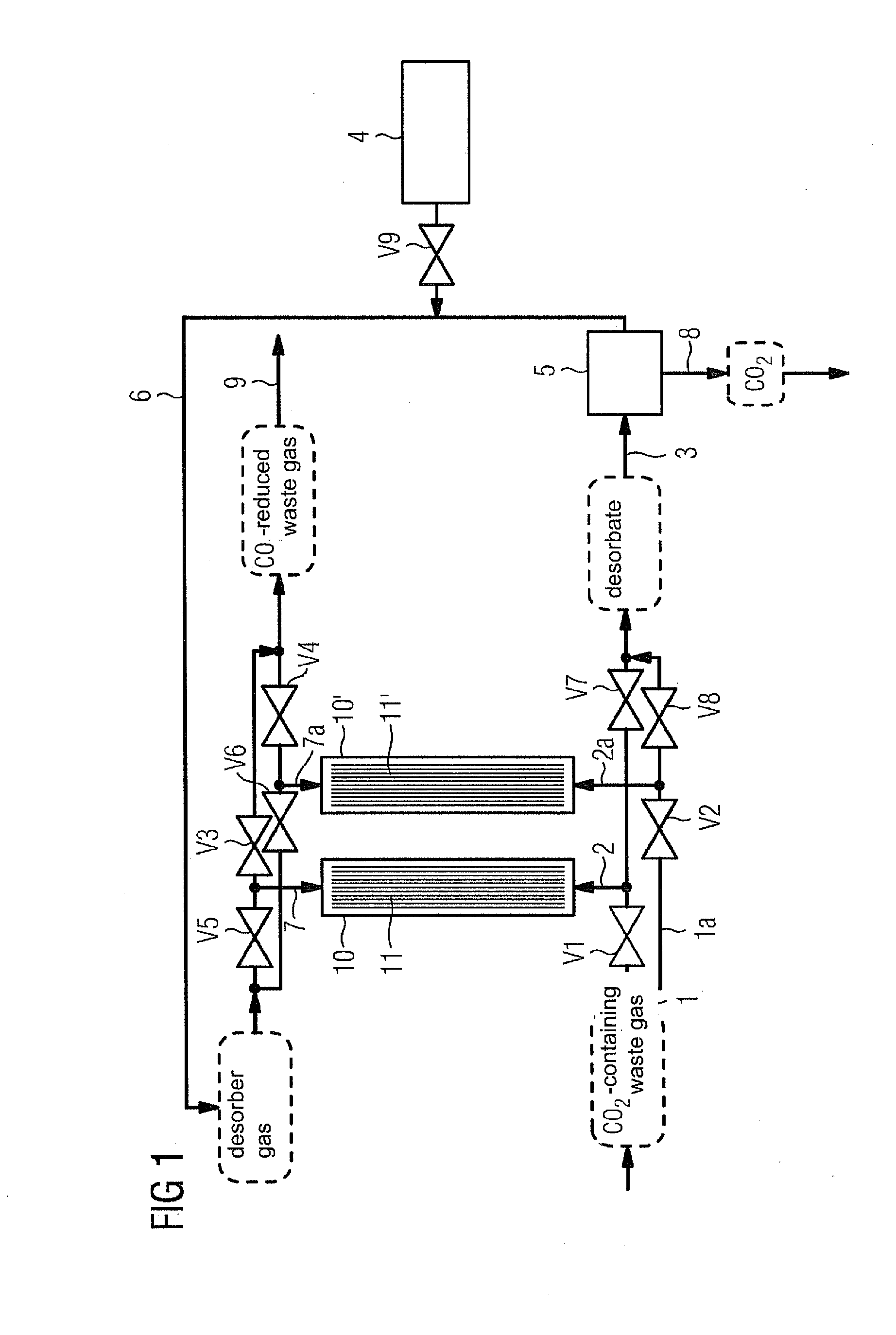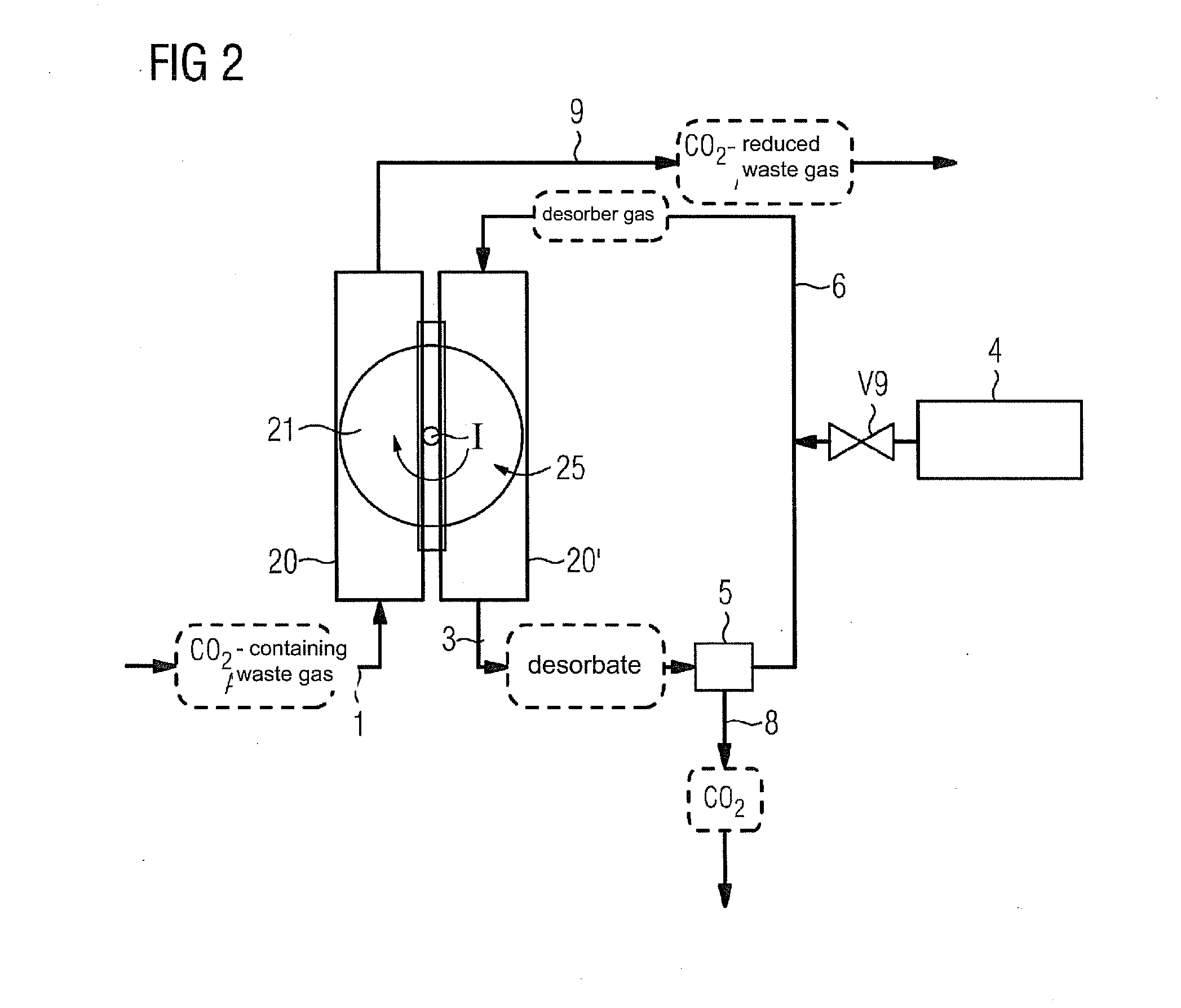Method for separating carbon dioxide from flue gases and associated device
a technology of carbon dioxide and flue gas, which is applied in the direction of separation processes, hydrogen sulfides, sulfur compounds, etc., can solve the problems of high energy requirements for regeneration, slippage of substances, and inability to solve existing plants
- Summary
- Abstract
- Description
- Claims
- Application Information
AI Technical Summary
Benefits of technology
Problems solved by technology
Method used
Image
Examples
Embodiment Construction
[0039]In the following, the two figures are described individually in each case. In this situation the essential elements, such as the reactors and valves including the lines which comprise the same function have the same reference characters.
[0040]With regard to the FIGS. 1 to 3, two identical reactors 10 and 10′, 20 and 20′, and 30 and 30′ respectively are present in each case, which are run in alternating operation. In other words, for example for
[0041]FIG. 1, while the one of the two reactors 10, 10′ is used for the adsorption of the CO2 in the waste gas containing CO2, the other of the two reactors 10, 10′ is discharged, which is described in detail further below. For such a type of alternating operation, fluid lines with a series of valves are required as well as additionally a storage container for an absorption agent for CO2 and a unit for separating the CO2 from the regenerate.
[0042]The two reactors 10 and 10′ in FIG. 1 each have a respective catalyst bed 11 and 11′. Waste ...
PUM
| Property | Measurement | Unit |
|---|---|---|
| Temperature | aaaaa | aaaaa |
| Temperature | aaaaa | aaaaa |
| Temperature | aaaaa | aaaaa |
Abstract
Description
Claims
Application Information
 Login to View More
Login to View More - R&D
- Intellectual Property
- Life Sciences
- Materials
- Tech Scout
- Unparalleled Data Quality
- Higher Quality Content
- 60% Fewer Hallucinations
Browse by: Latest US Patents, China's latest patents, Technical Efficacy Thesaurus, Application Domain, Technology Topic, Popular Technical Reports.
© 2025 PatSnap. All rights reserved.Legal|Privacy policy|Modern Slavery Act Transparency Statement|Sitemap|About US| Contact US: help@patsnap.com



